
Major Rivers in Europe by Length and Area
Posted By M.IsacA large number of rivers flow through the continent of Europe. Some of them form boundaries between different countries while others provide a valuable source of water for agriculture and freshwater fish for food. Most rivers in Europe are also rich in dissolved minerals and valuable organic compounds. Many are also marked by interesting physical features, such as waterfalls and canyons. The European rivers are, indeed, an extremely important part of the continent. The estimated number of these freshwater bodies equals 1,352. The major rivers of the continent are discussed in more detail below.
Volga River
Flowing through Western Russia, Volga is the longest river of Europe. It originates from the Valdai Hills and flows to a length of 3,690 km before it drains into the Caspian Sea. Here are some more informative facts about the river.
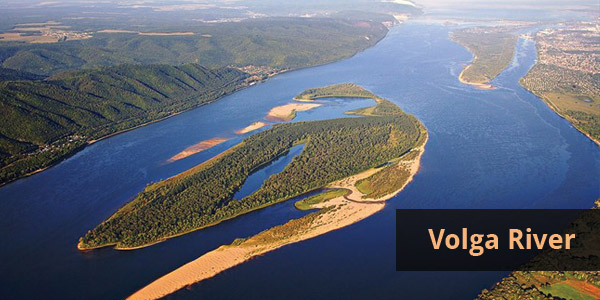
- Along with its tributaries, the river forms the Volga River system which drains an entire 1.35 million square kilometers of area.
- The delta of Volga River is 160 kilometers in length with five hundred small channels and streams.
- Most of the river freezes each year for three months of winter.
- The river offers an important reservoir of natural gas, potash, salt and other valuable minerals.
- The city of Yaroslavl is situated in the Volga basin. It is a historically important city formed in the 11th century and serves as a tourist attraction today.
Danube River
The second longest river in Europe is Danube. It originates from Germany’s Black Forest and flows into the Black Sea. During its course, it covers a length of 1,785 kilometers.
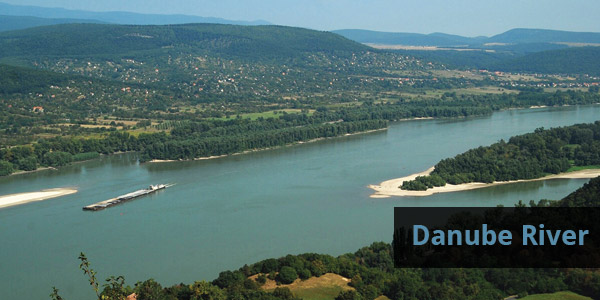
Discussed below are some interesting facts about Danube.
- The drainage area of the river covers 315,000 square miles.
- Thirty of the river’s 300 tributaries are navigable.
- The course of the river covers the borders of ten different European countries. It also passes through four capitals, namely Belgrade, Vienna, Budapest and Bratislava.
- The Danube delta ranks as the second largest delta of the world. Moreover, being the largest wetland of the continent, it houses around five thousand species of flora and fauna.
- One-third of the Danube River flows through Hungary. Budapest – the capital city of Hungary – is known as the Queen of Danube.
- The river provides fresh and pure water to a population of ten million in the entire continent.
Dniester River
River Dniester flows through the Eastern Europe. Its course runs through Ukraine, turns towards Moldova and then back to Ukraine where it flows into the Black Sea. Being 2,290 kilometers long, Dniester is one of the longest rivers of Europe.
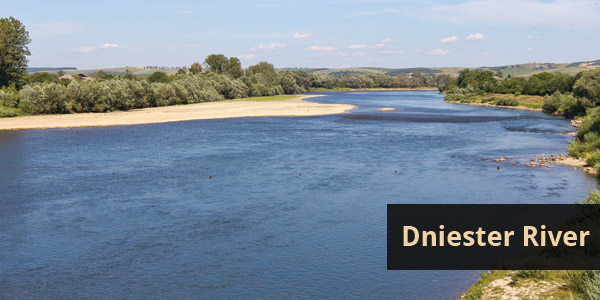
Here is more information about the river.
- The river originates inDrohobych which is a city in Ukraine.
- It is the second longest river in Ukraine.
- Part of the border between Ukraine and Moldova is formed by the Dniester River.
- The huge basin area of the river covers 68,627 square kilometers.
- The average discharge of the river is 310 cubic meters per second which makes it stand second to the Volga River in terms of average discharge.
Ural River
The Ural River flows through Russia and Kazakhstan, covering a course of 2,428 kilometers in length. It is one of the most important European rivers which serve several purposes, including navigation and power generation.

The following facts discuss more information about the Ural River.
- The river originates in Ural Mountains in Russia.
- It discharges into the Caspian Sea.
- The enormous drainage area of Ural covers around 231,000 square kilometers.
- The river’s average discharge equals 400 cubic meters per second.
- A reservoir and hydroelectric power station at Iriklinsky use the river’s water for the generation of power.
- The river freezes during the late November. It begins melting in April.
Elbe River
The Elbe is an important river of Central Europe. Its origin lies in the Krkonose Mountains in the north of the Czech Republic. The river flows through Bohemia, enters Germany and then meets its fate at Cuxhaven where it discharges into the North Sea.
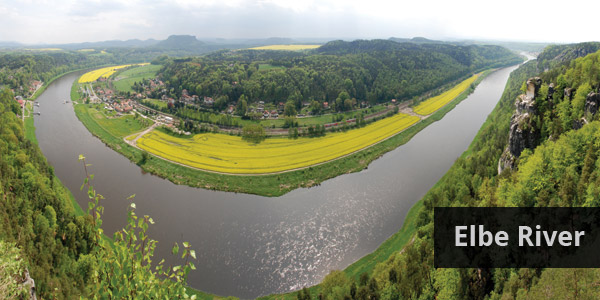
Have a look at the following information about the Elbe River.
- The length of the river is 1,091 kilometers.
- The Elbe basin is spread across a huge area of 148,2684 square kilometers.
- There are five major tributaries of Elbe: the rivers of Vltava, Havel, Ohre, Saale, SchwarzeElster and Mulde.
- The river serves as an extremely important commercial waterway in Germany.
- The drainage area of Elbe covers 144,055 square kilometers.
Douro River
Douro is one of the major rivers flowing through the Iberian Peninsula. It originates in Soria province in Central Spain, and flows through Portugal. The river forms a part of the border between Spain and Portugal. It runs for 765 kilometers and drains into the Atlantic Ocean at Porto.
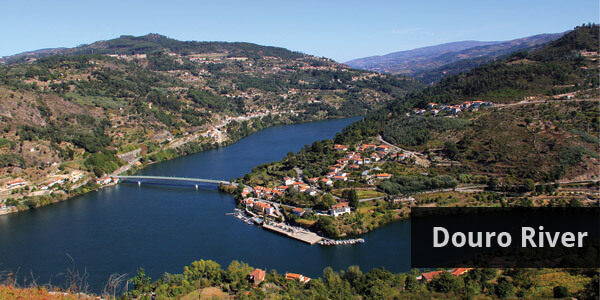
Some interesting facts about Douro are discussed below.
- It ranks as the third longest river in the Iberian Peninsula.
- Its catchment area covers 79,096 square kilometers.
- The main tributaries of the river are Tormes, Pisuerga and Esla rivers.
- Douro is not suitable for navigation due to rapids, silting and the presence of deep gorges.
- Grapes are grown as the main crop in Douro Valley which make the Douro Estuary the center of wine trade in Portugal.
- The water of the river has been used for the purpose of irrigation as well as the generation of hydroelectric power since the beginning of the twentieth century.
Loire River
Loire is the longest river flowing through France. It originates in the southern region of Massif Central and covers a length of 1,020 kilometers before flowing into the Atlantic Ocean through the Brittany Peninsula.

Have a look at the following interesting facts about Loire River.
- The Loire basin consists of fertile fields, rich gardens and vineyards of Orleanais and Touraine.
- Over three-hundred chateaux are found in the Loire Valley.
- Tuffeau limestone caves are found along the river which have been used by quarrymen in the middle ages. Today, there is a cave complex spread across 2000 kilometers where restaurants, museums, hotels and shops have been built for tourists.
- Navigation through Loire is prevented due to silting, seasonal fluctuations in the flow of water and shallowness.
Rhine River
Another of the major rivers of Europe, Rhine flows to a length of 1,233 kilometers and then discharges into the North Sea. During its course, it flows through six countries – Switzerland, Austria, the Principality of Liechtenstein, Netherlands, Germany and France.
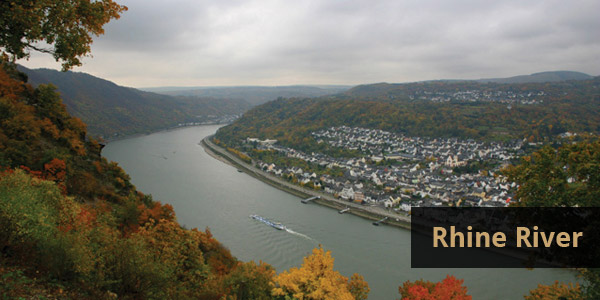
Discover more information about the Rhine River through the following facts.
- The river originates in the Swiss Alps.
- Rhine is Germany’s longest river.
- The river serves as an immensely important waterway for the Roman Empire. It is still used as a significant transport route in Europe.
- Rhine river lies at the border between Germany and France.
- The river valley houses the largest number of castles in the world between Bingen and Koblenz.
Garonne River
The Garonne River – Rio Garona in Spanish – is an important river flowing through south western France. It crosses the central Pyrenees in Spain and flows into the Atlantic Ocean through an estuary known as Gironde.
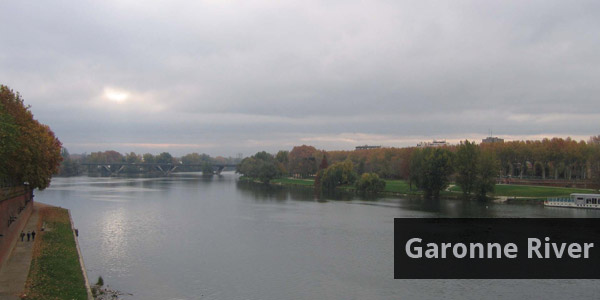
The following facts reveal more information about Garonne River.
- Two headstreams flowing from glaciers in northeast Spain form the river which then flows up to a length of 575 kilometers.
- The basin of the river lies in France and extends to Spain, covering an area of 84,811 square kilometers.
- The river is used as an important route for navigation and serves the purpose of inland shipping.
- The highest tidal point of the river is found at Castets.
Neva River
Flowing to a length of 74 kilometers, Neva is Europe’s shortest river. However, it ranks as the third largest river of the continent owing to its average discharge which equals 2,500 cubic meters per second.

More information about the Neva River is discussed below.
- The river originates in Lake Ladoga in northwestern part of Russia.
- Neva meets its fate at the Gulf of Finland where it flows into the Baltic Sea.
- The drainage area of the river covers an entire 282,000 square kilometers.
- It remains frozen from December to April.
- The Neva River is an important part of the White Sea Baltic and Vloga Baltic waterways.
- The St. Petersburg city is located at the mouth of the Neva River.
- There are a number of other important rivers in Europe. The continent makes use of the freshwater supply, fish, mineral resources and navigation potential of all the rivers to develop the region and thrive in the world.
Europe Continent - Latest Articles

Popular Sports in Europe
Posted By KathleenMany of today's most popular sports in Europe originally developed in the United Kingdom...

Top European Universities
Posted By John SmithEuropean countries are famous for producing some of the finest graduates, post-graduates...
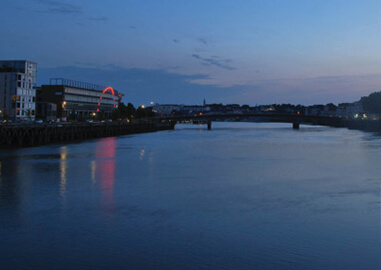
Major Rivers in Europe
Posted By M.IsacA large number of rivers flow through the continent of Europe. Some of them form boundaries...
